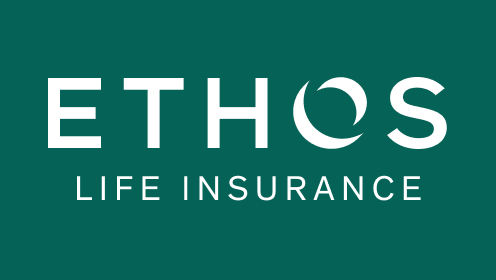A typical life journey involves school or college, career, first home, family, kids’ college and retirement. As you can imagine, your financial needs will probably change and therefore, you should plan in advance for each stage. Thinking about your death may be an uncomfortable topic. But as you build assets and more people depend on you to provide for them, life insurance should be part of your financial planning.
Life insurance is designed to reduce the financial shock your loved ones will experience after you’re gone, especially if you were the main breadwinner.
“Life insurance is primarily meant to protect your dependents during your most financially vulnerable time — when raising kids or paying off a mortgage, credit card or student loan debt,” says Brett Wilson, vice president of risk and actuary at Ethos.
A good life insurance policy can set up those you leave behind with a financial cushion. The question is: What type of life insurance should you choose?
You could go with term life insurance, which covers you for a certain period. Or you could take things one step further and invest in a permanent life insurance policy that’s effective as long as you live.
Take a closer look at permanent life insurance and how it compares to term coverage.
types of life insurance
When looking at life insurance, coverage falls into two main categories: term or permanent life insurance.
Term life insurance
Term life insurance covers you for the amount you’d like to leave to your beneficiaries for a set period. It’s the simplest type of life insurance to understand — unlike permanent life insurance, there’s only one type of term life coverage.
When purchasing a policy, you choose the coverage’s amount and length. Typical terms include 10, 20 or 30 years. If you pass away during the term, your loved one(s) you named as beneficiaries of the life insurance policy receive the payout, known as the death benefit, tax-free.
Once the term is up, however, your policy effectively expires and beneficiaries won’t receive a payout when you die.
Permanent life insurance
Permanent life insurance works a bit differently. The policy is permanent, meaning it’s in effect as long as you’re alive and pay your premiums.
In addition, it has one more component than term life insurance. Permanent life insurance adds a benefit while you’re alive, known as cash value.
What is cash value?
Each time you pay your permanent life insurance premium, part of it goes toward funding the death benefit and part of it goes into a tax-deferred account. The account is similar to a savings account, collecting interest and growing in value. It’s called cash value.
The death benefit is earmarked for your beneficiaries. The cash value is for your use while you’re alive — with limits. Any amount you take from the cash value will be deducted from what’s paid out to your beneficiaries after you die.
Therefore, feel free to borrow from your cash value, but make sure you pay it back to not affect the death benefit amount.
The cash value can grow at different rates, depending on the permanent life insurance type. Growth may be minimal, earning interest similar to a savings account or could be more aggressively invested into funds for higher returns (with more risk).
Types of permanent life insurance
As mentioned, you have options on how the permanent insurance policy’s cash value portion could grow, depending on the type of coverage you choose. There are four main types of permanent life insurance:
Whole life insurance
If you choose a whole life insurance policy, you’ll have a fixed premium payment and a set death benefit amount, as long as you don’t draw down the cash value.
You’ll need to consult with the insurance company to know how much you could borrow or withdraw without affecting the death benefit amount or creating tax issues. Similar to a savings account, the cash value in a whole life insurance policy will earn a small amount of interest.
Universal life insurance
Universal life insurance gives you more flexibility. You could adjust the death benefit amount, which could be useful as your needs change over time. Once you’ve paid a certain amount in premiums, a universal life policy allows you to adjust your premiums by reducing them or paying them less frequently.
It’s best to consult with your life insurance carrier on the terms and conditions of changing your premiums. As with whole life insurance, the cash value earns some interest.
variable universal life insurance
Variable universal life takes the flexibility of a universal life policy and combines it with the opportunity to grow your cash value more aggressively.
You’re not locked into a minimal interest rate. Instead, you can choose to invest in mutual funds, stocks and bonds. You may be able to grow the cash value amount faster, but whenever you’re dealing with equities, you take on more risk.
To remedy this, some insurers may guarantee the death benefit amount regardless of your cash value account’s performance.
Indexed universal life insurance
Indexed universal life insurance is similar to variable insurance. The main difference is the types of investments you have available.
Indexed life insurance allows you to invest in an index fund, such as the NASDAQ Composite or the popular S&P 500, to grow your cash value. Investing in an index fund may be a safer way to invest in the stock market because you won’t expose yourself to a single stock’s volatility.
Instead, your money grows to reflect the overall market’s performance, spreading your risk across all top performers.
Term vs. permanent life insurance
Still not sure about whether you should choose term vs. permanent life insurance? Consider the pros and cons of each:
Term life insurance pros and cons
Pros
- Cheaper than permanent life
- Set premium and death benefit amount
- You can purchase online
- Some policies can be converted into a permanent life insurance policy
- Death benefit is tax-free for beneficiaries
Cons
- Temporary coverage
- Most require medical checks making it harder to get coverage if you have serious health issues
- No cash value
- Once the policy term ends, all the money you paid in premiums is kept by the insurance company
Permanent life insurance pros and cons
Pros
- Doesn’t expire as long as you’re alive and pay your premiums
- Some permanent life insurance policies allow you to adjust the death benefit amount and the premium payments
- Includes a living benefit known as cash value
- You can borrow the cash value amount
- Cash value can grow by earning interest or through investing
- Death benefit is tax-free for beneficiaries
Cons
- More expensive than term life insurance
- Earns a low interest rate
- Borrowing the cash value must be repaid with interest
- Withdrawals or unpaid cash value loans could reduce the death benefit amount
- Withdrawals could cost you penalties and/or tax liabilities
Find out more about term vs. perm life insurance.
Types of permanent life insurance riders
Besides the main types of permanent life insurance, you could add riders to customize your coverage further. Riders are extras and add to your life insurance’s cost.
Some of the most popular permanent life insurance riders include:
- Accelerated death benefit — If you become terminally ill, your insurance carrier will advance you a percentage of your policy’s death benefit to help you pay for your end-of-life expenses.
- Accidental death rider — Your policy will pay beneficiaries a higher death benefit if you die in an accident.
- Critical illness rider — Provides you with money from the death benefit amount to cover your expenses if you’re diagnosed with a critical illness.
- Family income rider — If you’d like to provide a steady income flow to your beneficiaries instead of a lump sum, a family income rider lets you establish a monthly payment amount for a set period.
- Guaranteed insurability rider — Adding this rider means you won’t be required to take a medical exam for a certain period. It will come in handy if you buy a permanent life policy when you’re young. It will ensure you may make changes to your policy in the future without having to pass a medical exam.
- Long-term care rider — Pays out funds from the death benefit amount to cover long-term care.
- Waiver of premium rider — Allows you to put off or entirely waive your premium if you become ill or disabled.
How much does permanent life insurance cost?
Determining permanent life insurance’s cost is harder to pin down than a term life policy.
There are several types of coverage, with costs based on your:
- Age
- Health
- Location
- Policy amount
One thing’s for sure — expect to pay more for permanent life insurance than you would for term coverage. The reason should make sense. When you pay for permanent life insurance, part of the proceeds go toward the death benefit payout and part goes to growing your policy’s cash value. Plus, a permanent life insurance policy means the insurer will definitely have to pay out at some point as long as you make your payments.
The extra cost may be worth it.
“A $250,000 whole life policy, paid up at 65, will cost you roughly $3,018 per year, but by age 65, you’ll have somewhere around $215,000 in cash value and a death benefit of $448,000,” says Kerry Peabody, certified long-term care specialist and senior account executive at Clark Insurance in Portland, ME:
For a quick comparison of the cost of different types of life insurance, take a look at some Allstate sample quotes for $250,000 in coverage for a healthy individual:
- 20-year term life insurance: $24.64 per month
- Universal life insurance: $144.76 per month
- Whole life insurance: $310.41 per month
Who is permanent life insurance best for?
Permanent life insurance is more expensive than term life insurance. It builds on term coverage by adding cash value, which can be used while you’re alive.
The low-earning cash value account isn’t the best choice to invest for retirement unless you’ve already maxed out your retirement account contributions. Nevertheless, permanent life insurance is a good option in many situations.
Higher-net-worth individuals may choose to set up a permanent life insurance policy to fund their future borrowing needs. Known as Infinite Banking, an insurance policy with a high cash value amount could replace banks and lenders and allows you to borrow from yourself instead.
“You may also want to consider a whole or universal life policy if you have a permanent need for the protection,” Peabody says.
Good candidates include younger individuals with a family history of certain illnesses, such as diabetes, who’d like to lock in coverage. Having permanent coverage early on ensures you’re covered should a chronic illness emerge later.
Another reason a permanent life insurance policy is better than term insurance is if you have a disabled child who will need a lifetime of care. Peabody recommends “a second-to-die policy to provide for that child when you’re gone.”
A trustee may be necessary to administer the death benefit. And if the child is a minor, extra arrangements may need to be made.
“Work with an attorney to set up a special needs trust, so you don’t jeopardize the child’s benefits,” Peabody says.










